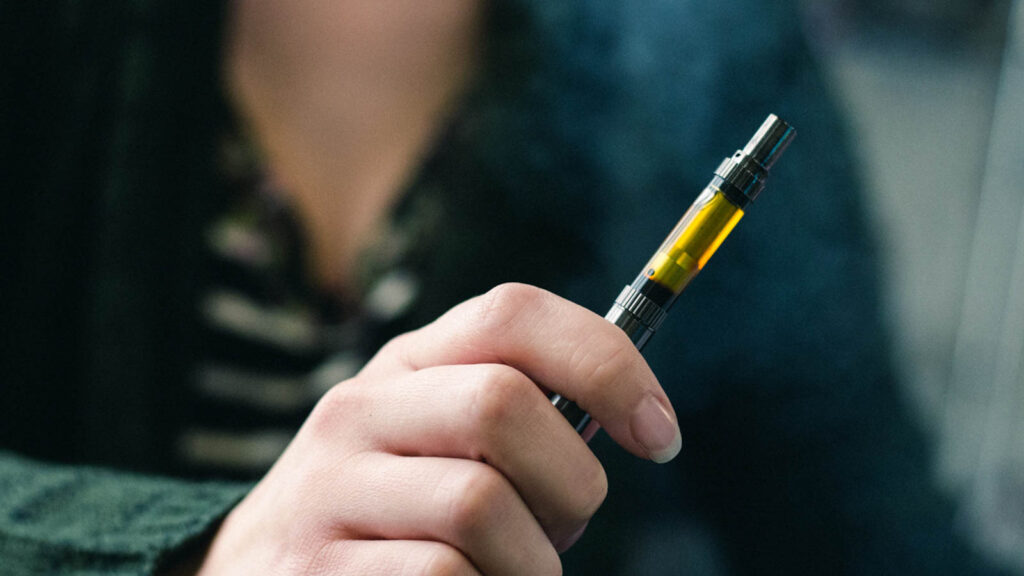Cannabis
Vaping Concentrates: Everything to Know
In recent years, vaping concentrates has become a popular alternative to traditional smoking methods in the cannabis industry. With advancements in technology and a growing interest in potent cannabis extracts, many smokers are shifting towards vaporizing concentrates. While vaping is not necessarily a better alternative to smoking, it offers a different experience that appeals to many cannabis enthusiasts.
Concentrates come in various forms, such as shatter, rosin, hash, and wax. As well as, each offering unique characteristics and THC percentages that enhance the marijuana experience. Vaping concentrates has gained popularity, with retail stores across the country offering different forms of extracts. Some people choose to use vape pens with oil cartridges, while others prefer dab rigs and scooping out their favorite concentrates. Both methods have their differences, but they ultimately produce similar results, making it a matter of personal preference.
In this comprehensive guide, we will provide you with a breakdown of everything you need to know about vaping concentrates. Including the different consumption methods, the types of concentrates available, and the potential health risks associated with vaping. So let’s dive in and explore the world of vaping concentrates!
Dabs Vs. Carts: Exploring Different Ways to Vape Concentrates
Dabs and carts are the primary methods of consuming cannabis extracts, but they differ significantly in terms of consumption techniques. Dabbing involves vaporizing concentrates like shatter, wax, and crumble using a dab rig. On the other hand, vape carts are pens with cartridges with THC-dominant e-liquids.
The heating mechanism is the key difference between dabbing and using vape carts. Dabbing relies on conductive heating, where an individual heats a titanium nail before introducing the concentrate for vaporization. Vape pens use a heating coil that releases active cannabinoids and terpenes when heated. This convective heating technique does not involve combustion, as hot air releases the vapor. Many businesses now use ceramic vape carts to ensure that the concentrates do not come into direct contact with the heat, providing a more controlled and efficient vaping experience.
You might be wondering if you can put shatter in a wax pen. The answer is yes! Using a wax pen allows for a portable and efficient way to consume THC extracts, similar to using e-cigarettes. Both methods offer the benefits of vaporizing extracts, making them popular choices for individuals looking for a convenient and discreet way to enjoy their concentrates.
Are Dabs Stronger Than Cartridges?
One common question among novice concentrate users is whether dab pens are more potent than using dab rigs. While dab pens may not provide the same intensity as a full-size dab rig, they still offer a similar high. Vaping concentrates through a vape pen exposes you to a higher THC concentration compared to smoking a joint, blunt, or even a bong. However, dabbing provices a more intense high, primarily because it involves using a more concentrated form of extracts. Despite this, using dab pens with your personal stash of concentrates can still provide a solid buzz for anyone seeking a vape experience with their concentrates.
Check out our line of Vaporizers here!
Exploring Different Types of Concentrates
Concentrates come in various forms, each with its own unique characteristics and recommended methods of consumption. Let’s take a closer look at the most popular types of concentrates available in the market:
Shatter: The Purest Form of Concentrate
Shatter is the purest form of concentrate available on the market. It is derived from butane hash oil and gets its name from its glass-like texture that can shatter into pieces. Shatter has a smooth feel and is often slightly sticky. You can commonly find shatter at dispensaries, and it is a popular choice among concentrate enthusiasts.
Crumble: Malleable and Potent
Crumble is another type of concentrate that offers a bit more flexibility in terms of texture. You create crumble by whipping or vacuuming BHO, resulting in a potent extract that is soft and easy to break apart. Crumble is a reliable choice for dabbing, as it can place appropriate dabs into your dab rig.
Wax: Versatile and Sticky
One of the most versatile forms of extracts is wax. Its sticky texture makes it an excellent choice for use in a dab pen or rig. Wax is available in various colors, ranging from gold to brown, and offers a unique vaping experience.
Oil: Liquidy and CO2 Derived
Cannabis oil comes in different forms, distinct from other types of extracts. It is derived from CO2 extraction rather than butane, resulting in a more liquidy consistency. Storing oil in a syringe is recommended due to its liquidity. Cannabis oil is put with a cartridge filling machine, making it a suitable option for individuals who prefer vaping over other forms of consumption.
Rosin: Popular and Accessible
Rosin is one of the most popular forms of extract due to its accessibility. It is derived from kief, trim, or bud and shares similarities with shatter and oil. You can use Rosin in both dab rigs and dab pens, providing versatility for concentrate enthusiasts.
The Rise of Cannabis Vaping Among Youth
While vaping concentrates has gained popularity among adults, it has also become a pressing public health issue among young people. The rapid emergence of youth vaping, including cannabis vaping, has significantly impacted adolescent substance use in Canada and other parts of the world. With nicotine being the most common substance in vaping devices. The prevalence of cannabis vaping among youth is also a cause for concern.
Cannabis vaping is now one-third of youth who vape. However, it may generate fewer toxic emissions compared to smoking, it has been associated with cases of acute lung injury. The high-potency forms of cannabis often used in vaping expose young people to several acute and long-term health risks. The perception of cannabis as a less risky substance, combined with the perceived safety of vaping, creates a false sense of security and makes it an appealing option for youth seeking a “healthier” way to use substances.
Efforts to limit the spread of cannabis vaping among Canadian youth require collaboration among pediatric providers, public health experts, schools, communities, and families. While there is little research on supporting youth who already vape cannabis, it is crucial to address this issue through education, prevention, and early intervention strategies.
The Epidemiology of Cannabis Vaping Among Youth
The rise of cannabis vaping among young people has been alarming. Rates of e-cigarette use and cannabis vaping have increased rapidly among youth in North America. While combustible cannabis remains the most common mode of consumption among teens, cannabis vaping is gaining popularity. In Canada, the use of vape pens among adolescents and young adults with cannabis use increased from 20% to 26% between 2017 and 2018. Data from Ontario also shows an increase in the proportion of high school students reporting cannabis vaping in the past 12 months.

There is a strong association between nicotine vaping and cannabis use among adolescents and young adults. Many youth who vape nicotine also use their vaping devices for cannabis consumption, blurring the boundaries between the two substances. Cannabis vaping has been linked to increased cannabis consumption compared to other modes of consumption.
Health Effects of Vaping Concentrates
Vaporizing cannabis is potentially less harmful mode of consumption then smoking. Vaporization can generate fewer chemicals than smoking, making it a potentially “healthier” option. However, the use of high-potency concentrates in vaping devices can lead to severe health consequences, such as paranoia, psychosis, and cannabis hyperemesis syndrome. The long-term effects of vaporized cannabis on lung health are still not well understood, especially when compared to smoked cannabis.
Flavored cannabis vaping products, which are popular among young people, may contain harmful and carcinogenic aerosols. These aerosols can pose risks to the developing lungs of adolescents. Additionally, the recent increase in cases of e-cigarette or vaping-associated lung injuries (EVALI) has raised concerns about the safety of vaping, especially when using illicit THC products.
Vaping devices themselves also present risks. Reports of injuries related to device malfunction or explosions have been increasing. The risk of accidental poisoning among young children who mistake cannabis vaping products for candies or toys is also a significant concern.
Conclusion: The Need for Collaborative Efforts
The rise of cannabis vaping among youth is a pressing public health issue that requires collective efforts from various stakeholders. Improved regulation and oversight of the cannabis industry are essential to limit underage cannabis vaping. However, addressing this issue goes beyond regulation. Collaboration among pediatric providers, public health experts, schools, communities, and families is crucial to prevent and reduce the spread of cannabis vaping among young people. Education, prevention strategies, and early intervention will play a vital role in protecting the health and well-being of youth.
As the popularity of vaping concentrates continues to grow, it is important for individuals to be learn about the different types of concentrates. The various vaping methods available, and the potential health risks associated with vaping. In conclusion, understanding the facts and making informed choices. Individuals can enjoy their cannabis concentrates responsibly and minimize the potential risks involved.


